Tiny doors, miniature paths, mossy roofs, and twinkling lights—fairy gardens are where creativity and storytelling meet landscape design. Whether placed under a tree, nestled in a flower bed, or built in a shallow pot on your porch, outdoor fairy gardens invite charm, wonder, and play into your space.
You don’t need to be an experienced gardener or a DIY expert. These small-scale scenes can be as simple or intricate as you want. With 30+ ideas in hand, this article gives you the inspiration and practical guidance to design your own magical world outdoors.
How to Start Your Outdoor Fairy Garden
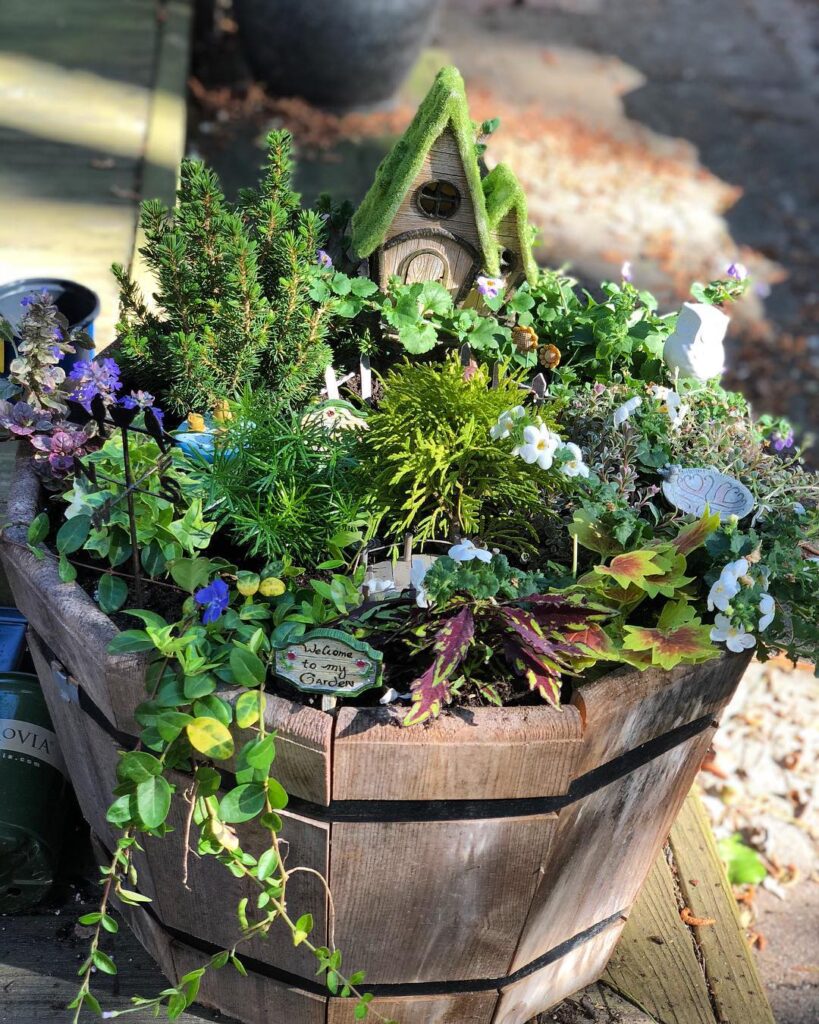
Instead of strict steps, think of your fairy garden as a process: a combination of planning, collecting, building, and improvising.
1. Choose a Setting

Start with an area that draws your eye. Popular options include:
- The base of a tree
- A corner of a flower bed
- A large planter or pot
- A moss-covered rock patch
- Beside a garden path
Pick a place that receives at least partial sunlight and is accessible for decorating and updating over time.
2. Build Around a Story

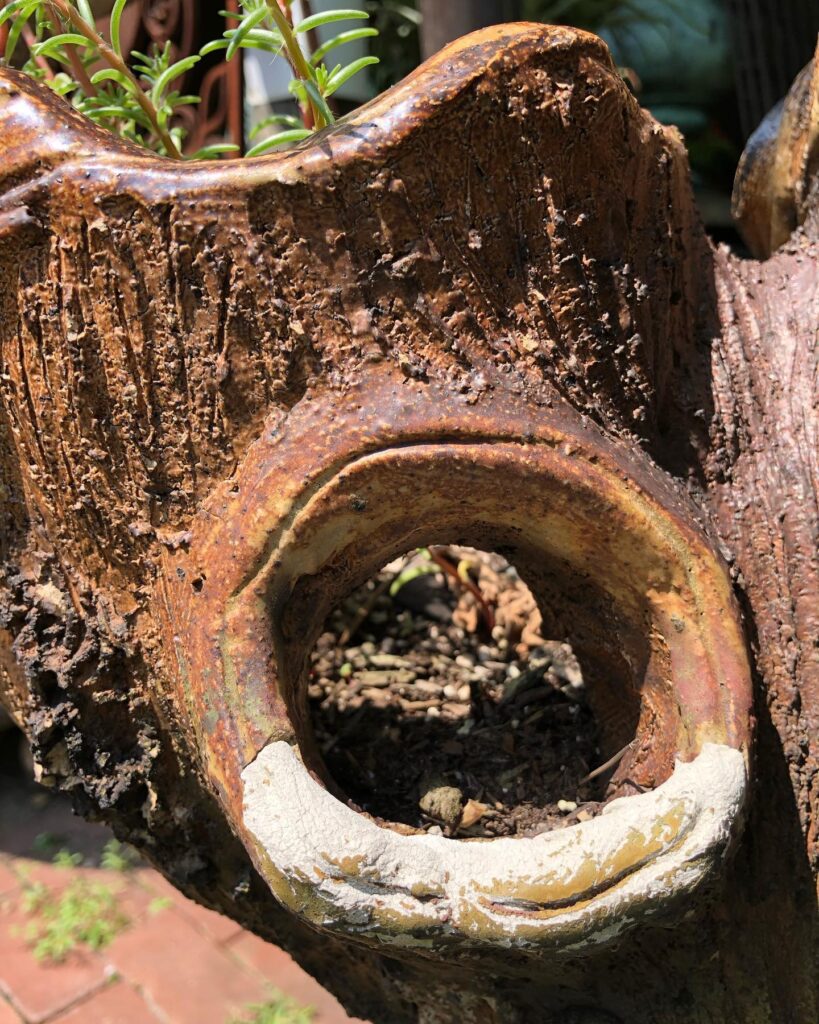
Fairy gardens feel more cohesive when they follow a loose theme. Ask yourself:
- Is this a fairy village or a single fairy’s cottage?
- Is it a forest retreat, seaside escape, or mountaintop lookout?
- Are the fairies gardeners, bakers, wanderers?
This approach helps you choose pieces that work together—tiny benches, bridges, ladders, clotheslines, mailboxes, and so on.
3. Use the Landscape Creatively

Let natural materials guide your layout. A tree root becomes a staircase. A hollow log is a fairy tunnel. Uneven stones can be miniature steps. Instead of clearing space, work with the textures and shapes already there.
Types of DIY Fairy Garden Ideas
You can use these categories to structure your own collection of scenes or ideas from the images you’ve gathered. They’re flexible enough to match almost any photo.
Miniature Furniture & Fixtures
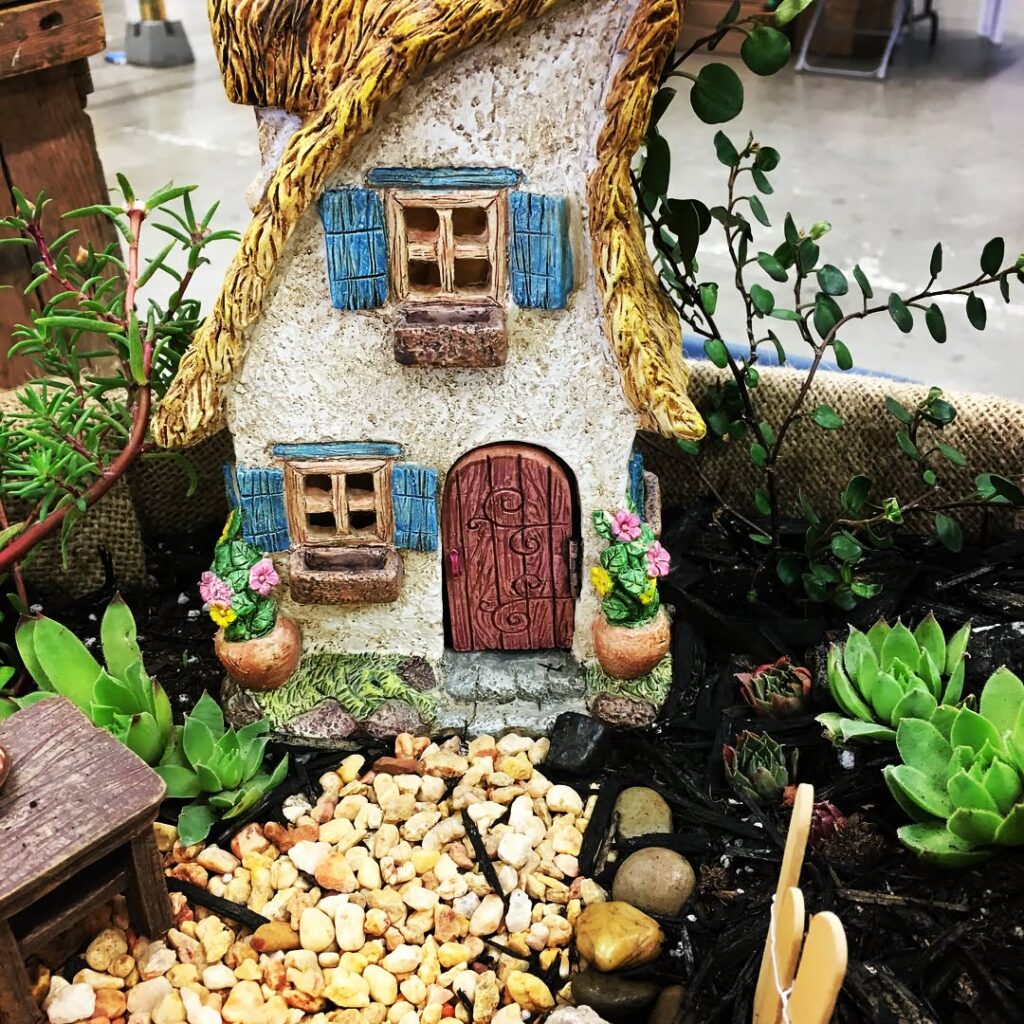


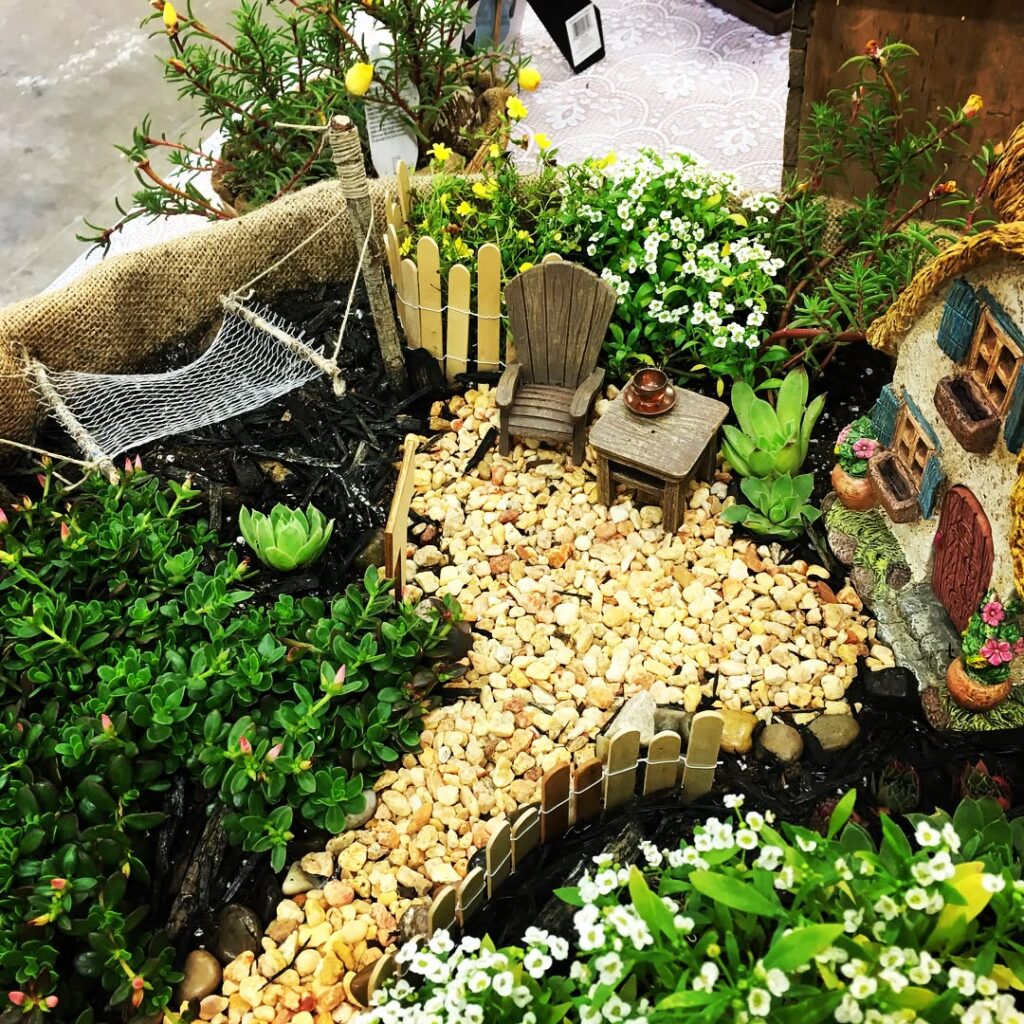
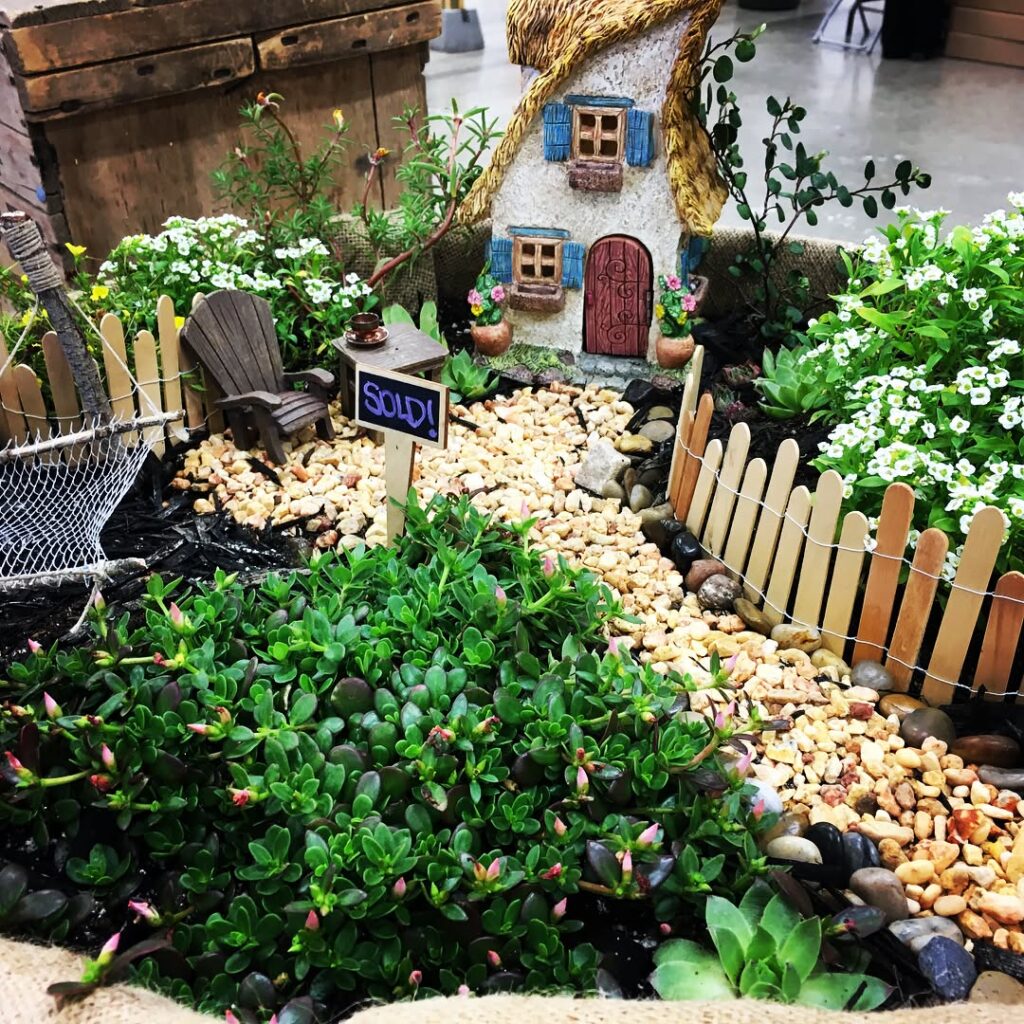
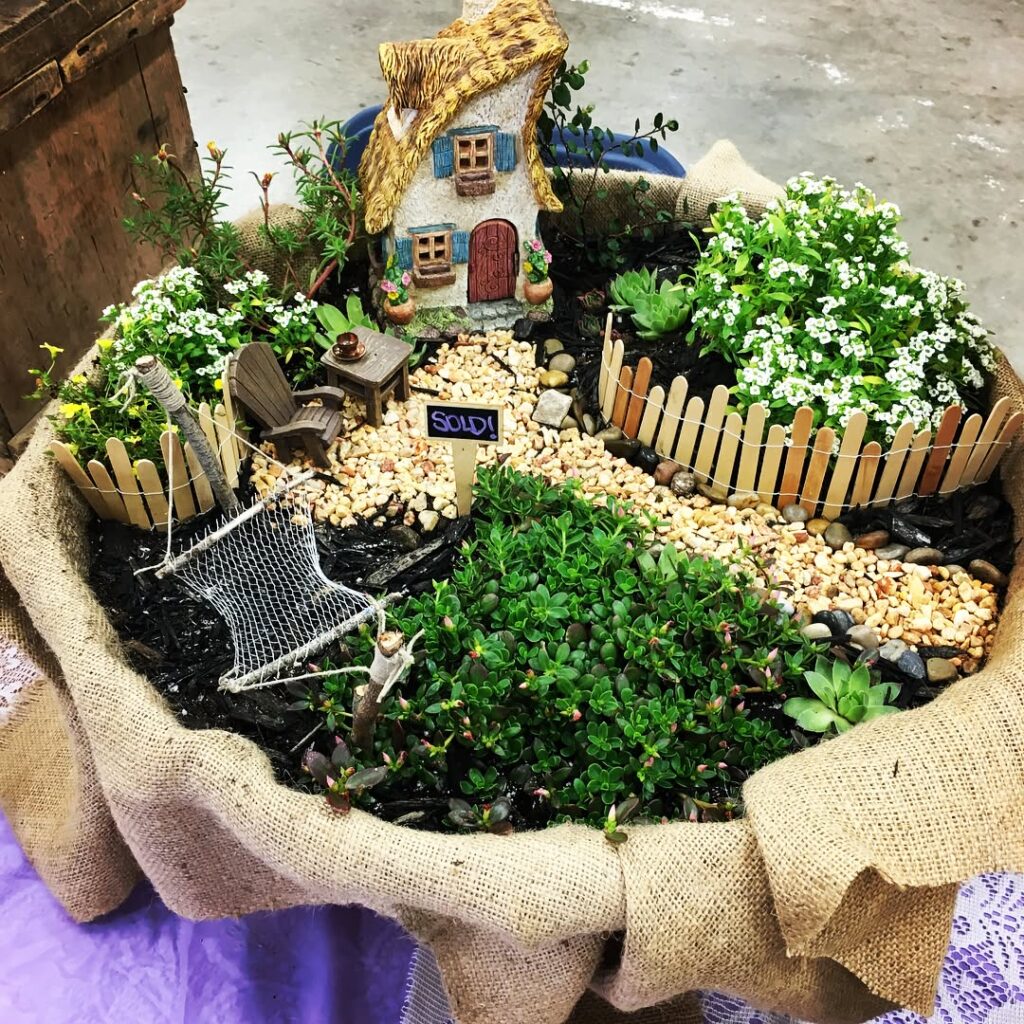
- Twigs turned into chairs and swings
- Pebbles used as stepping stones
- Acorn caps for tableware
- Bottle caps as fire pits
- Spools and buttons repurposed into fairy tools
Reclaimed and Recycled Materials
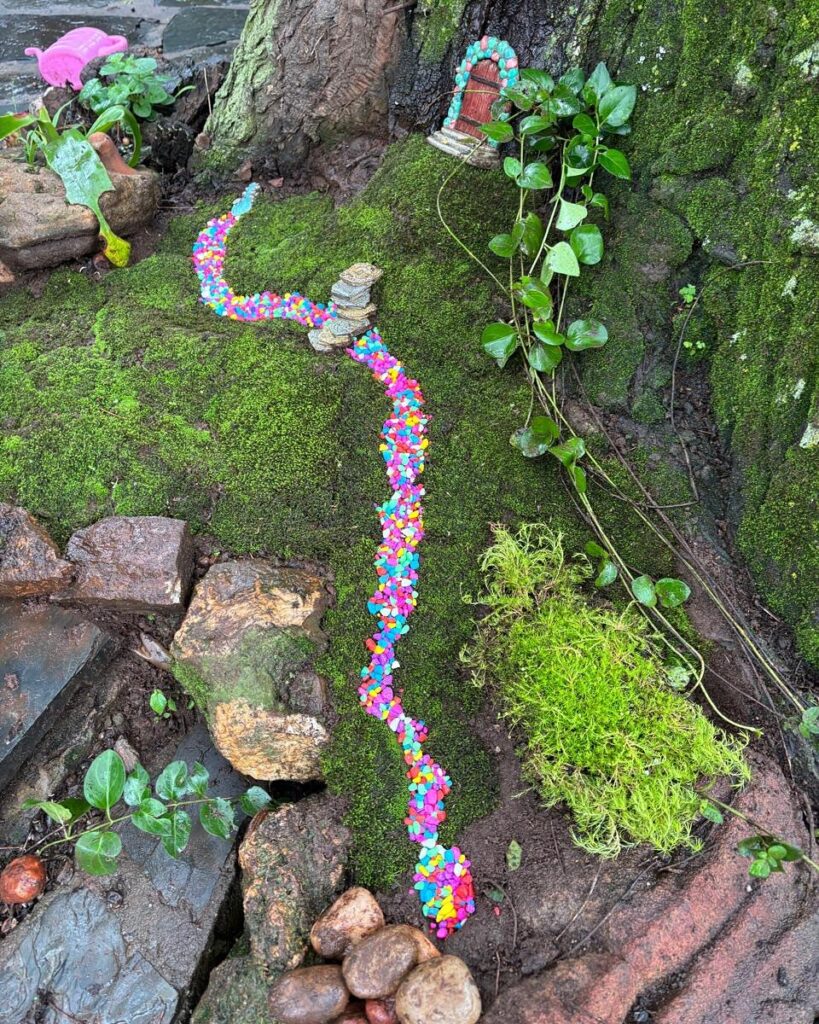
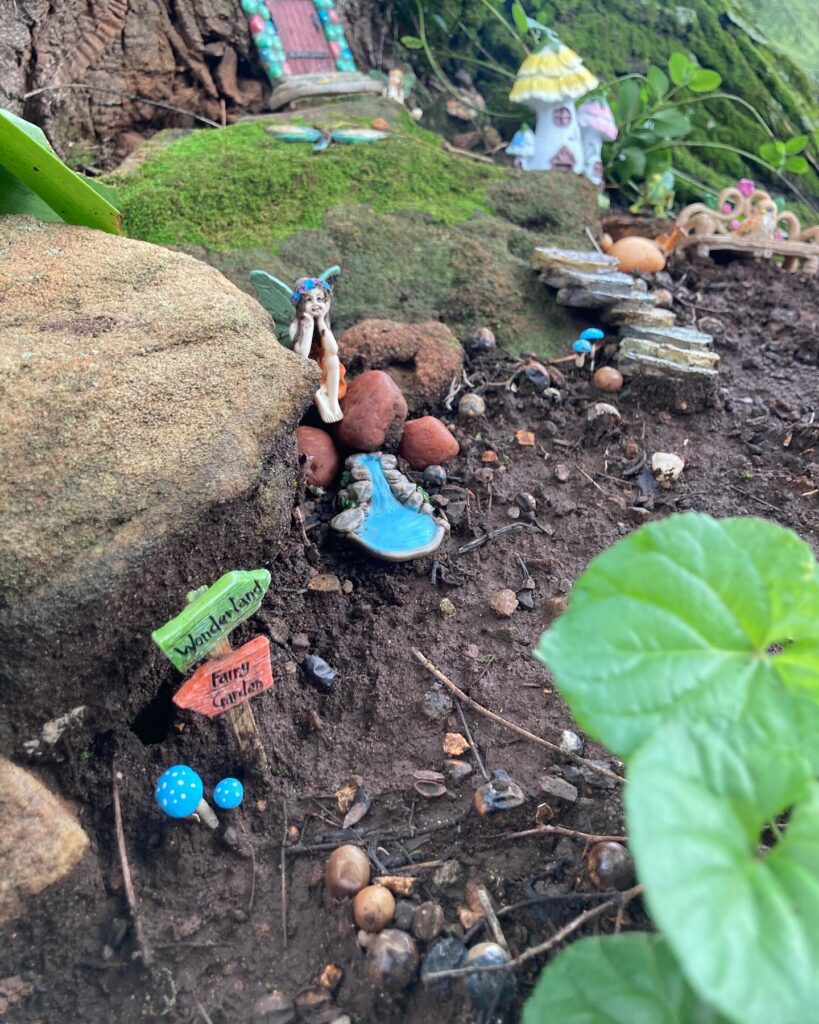
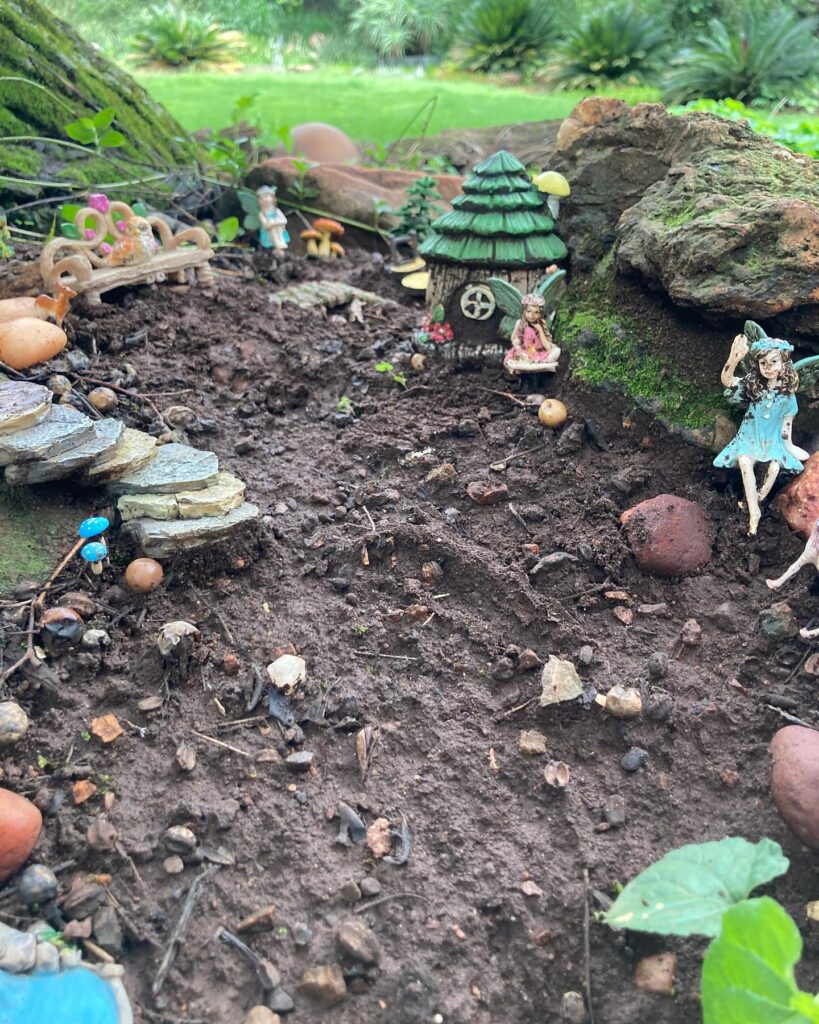
- Broken pots as terraced gardens
- Teacups or bowls converted into fairy homes
- Old lanterns housing tiny indoor scenes
- Popsicle sticks for fences or decks
- Wine corks as planters or totems
Living Materials & Plantings

- Moss carpets and leaf roofs
- Sedum, thyme, or creeping Jenny as miniature landscaping
- Small bonsai trees to mimic forests
- Flowers planted in shells or nutshells
- Succulents as fairytale shrubs
Seasonal Touches
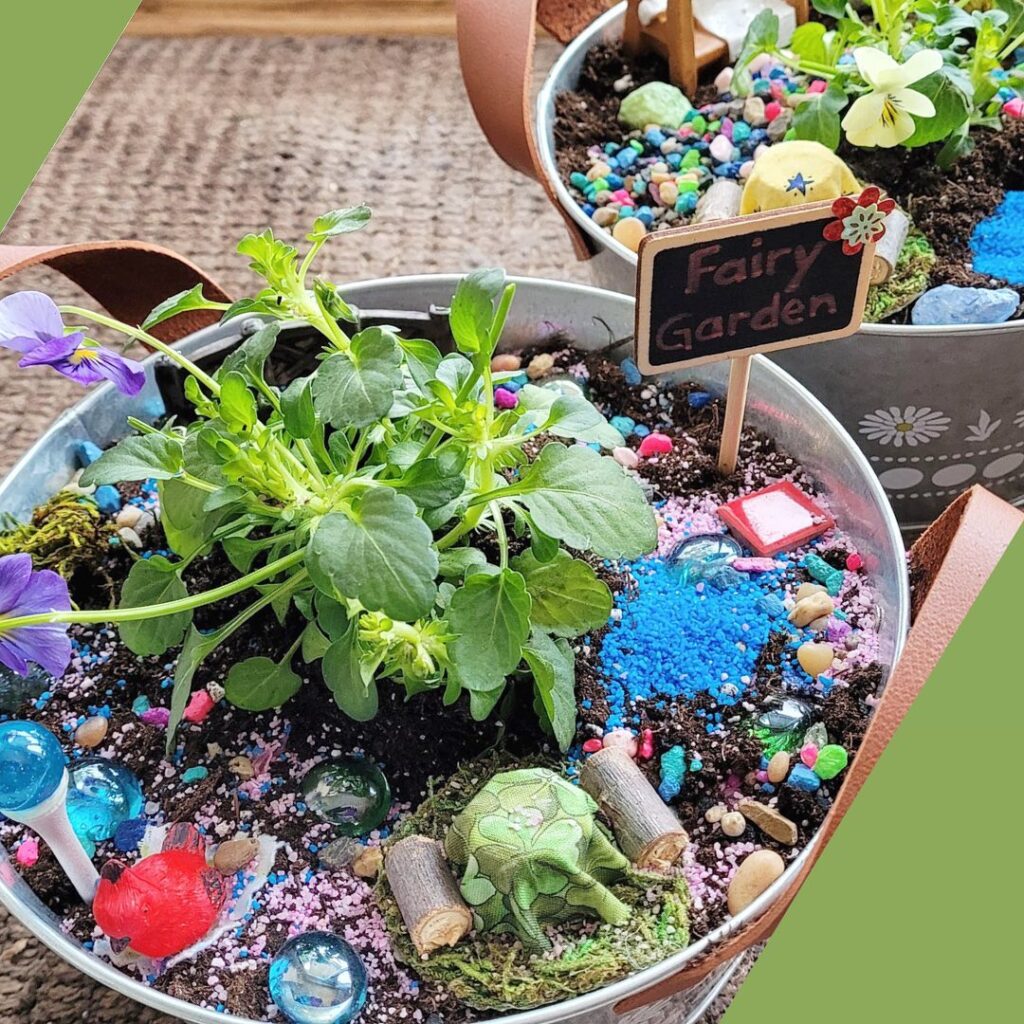
- Spring: Blossoms and egg-themed decor
- Summer: Seashells, sand, mini beach scenes
- Fall: Tiny pumpkins, dried leaves, twig brooms
- Winter: Cotton snow, twinkle lights, pinecone trees
Rotate décor or plantings throughout the year to keep the scene fresh and interactive.
Tips for Making It Last Outdoors

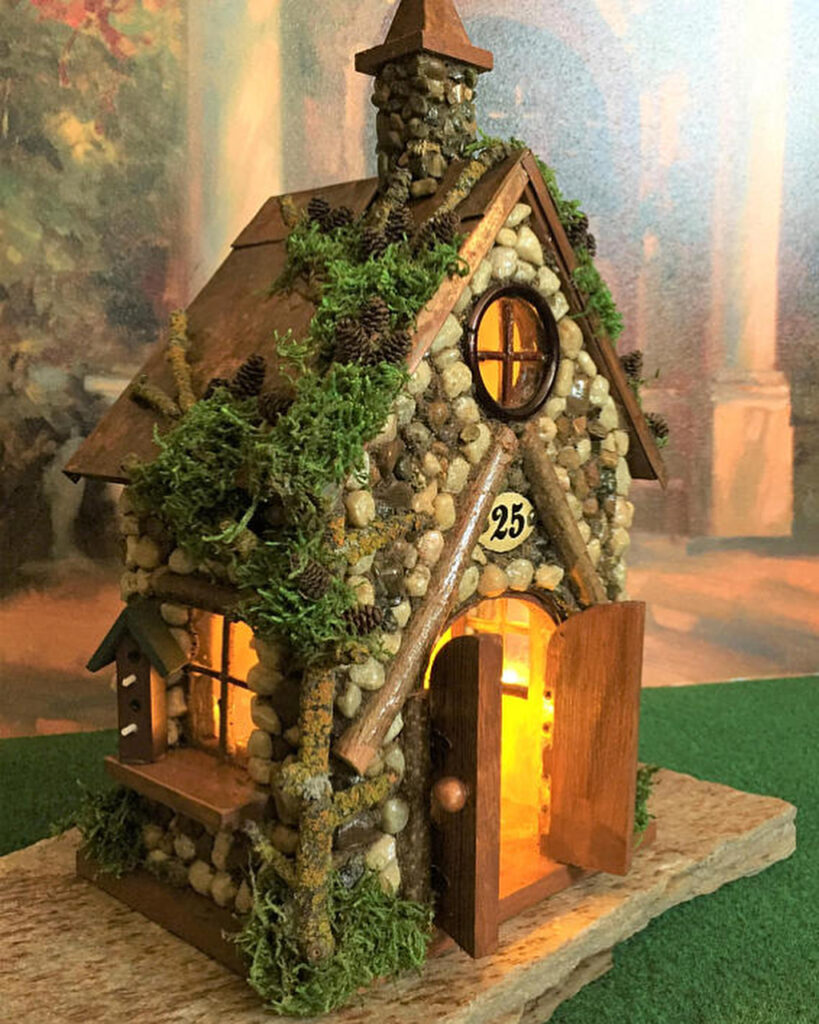
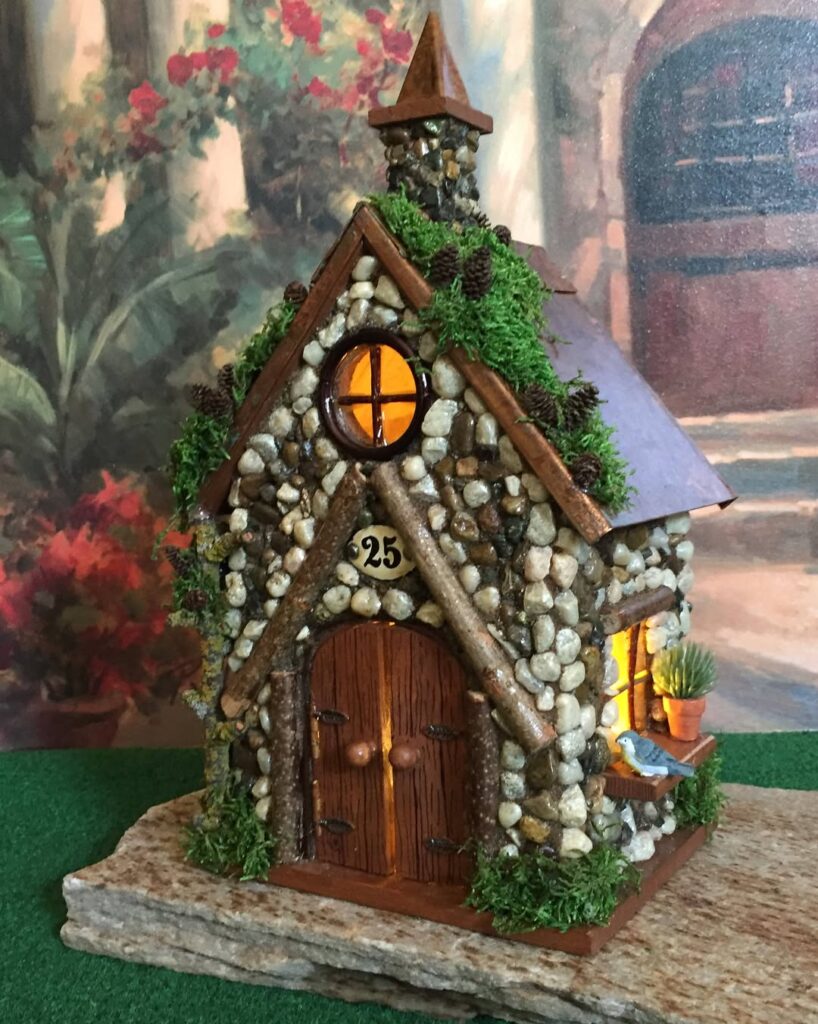
Building a fairy garden for the outdoors means planning for the elements.
- Use weather-resistant glue and sealants on delicate parts
- Anchor small pieces in gravel or sand to avoid shifting in rain
- Avoid paper, cardboard, or untreated wood unless you accept that they’ll decay naturally
- Protect painted items with clear sealant spray
- Place heavier items low to prevent tipping in wind
Also consider using a small path of real stones or bark leading to the scene, which makes it easier for visitors (kids or guests) to interact without stepping on it.
Common Layout Formats
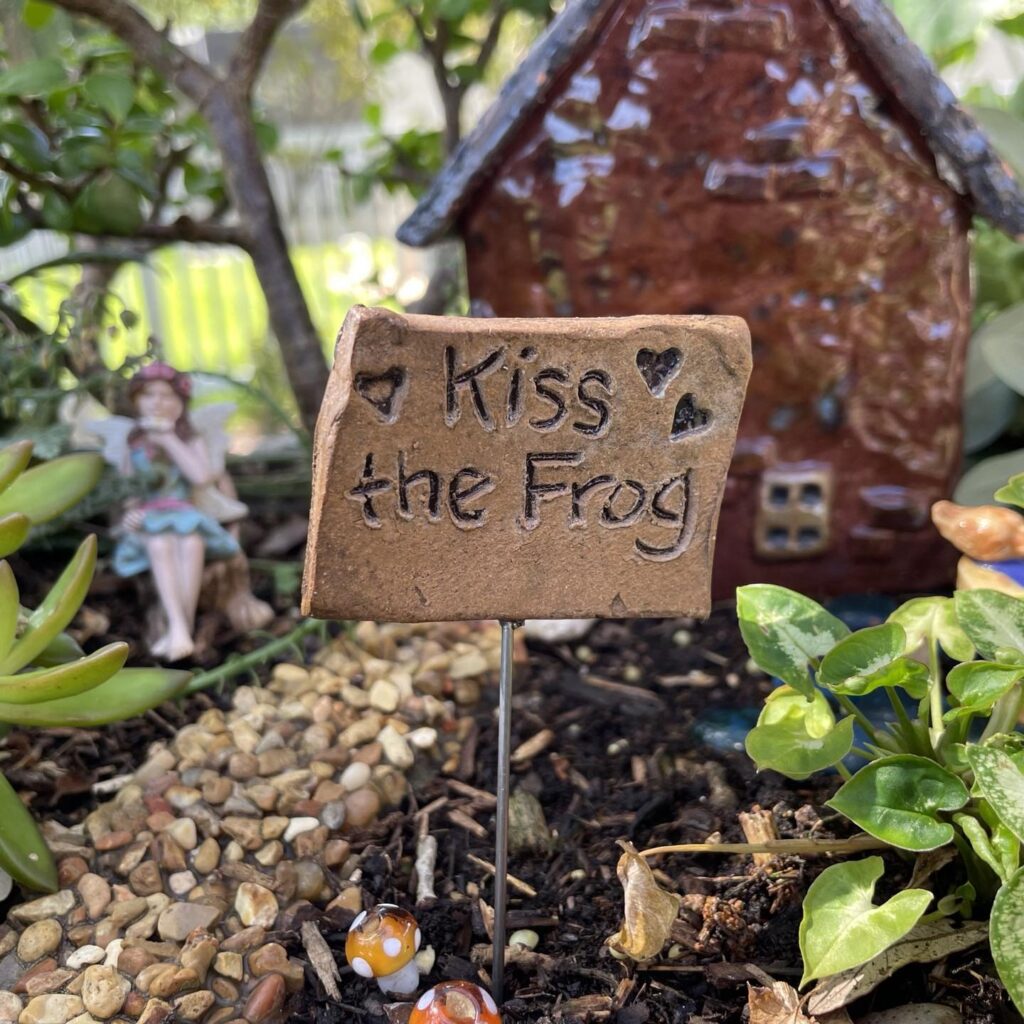



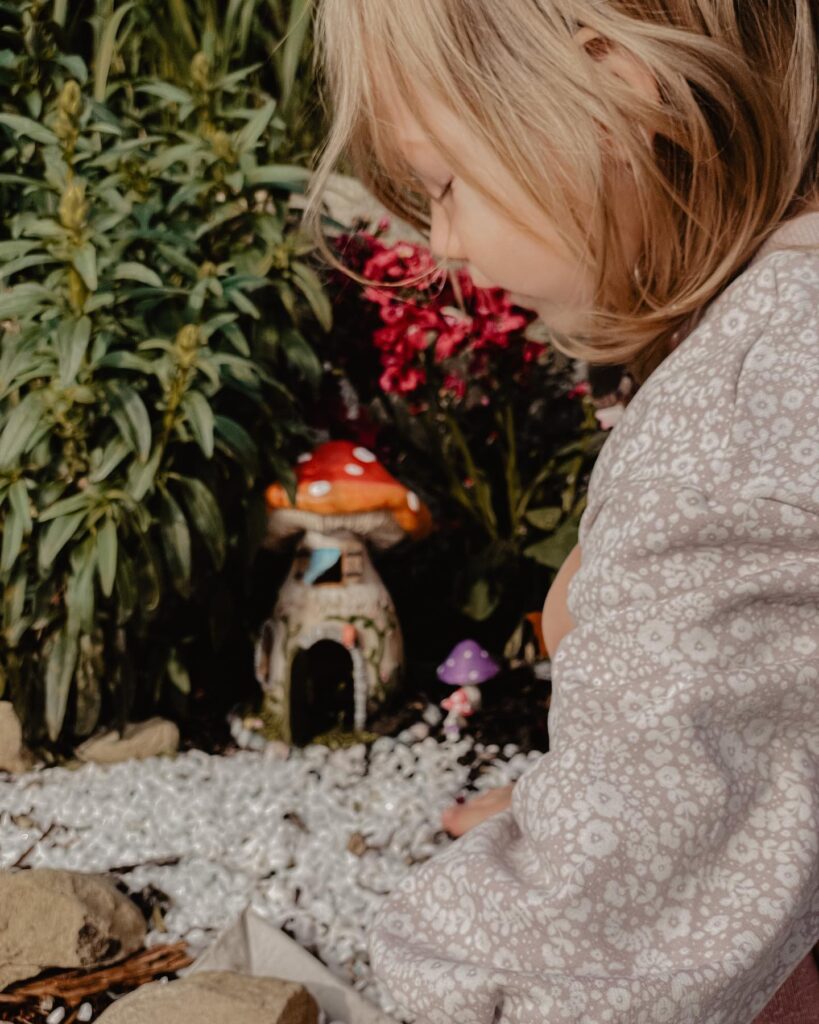

Here’s a helpful breakdown of layouts you might use in your post or pin gallery:
- Container Gardens: Scenes built inside pots, buckets, or boxes
- Tree Base Villages: Multi-structure setups circling a large tree
- Vertical Setups: Layered scenes using rocks or stairs for elevation
- Corner Gardens: Placed in corners of existing flower beds
- Standalone Displays: Freestanding trays, birdbaths, or lanterns
- Hidden Worlds: Tucked into wall crevices, log hollows, or stone clusters
Mention or tag these layout styles under each image to make browsing more intuitive.
Encourage Kids and Guests to Join In


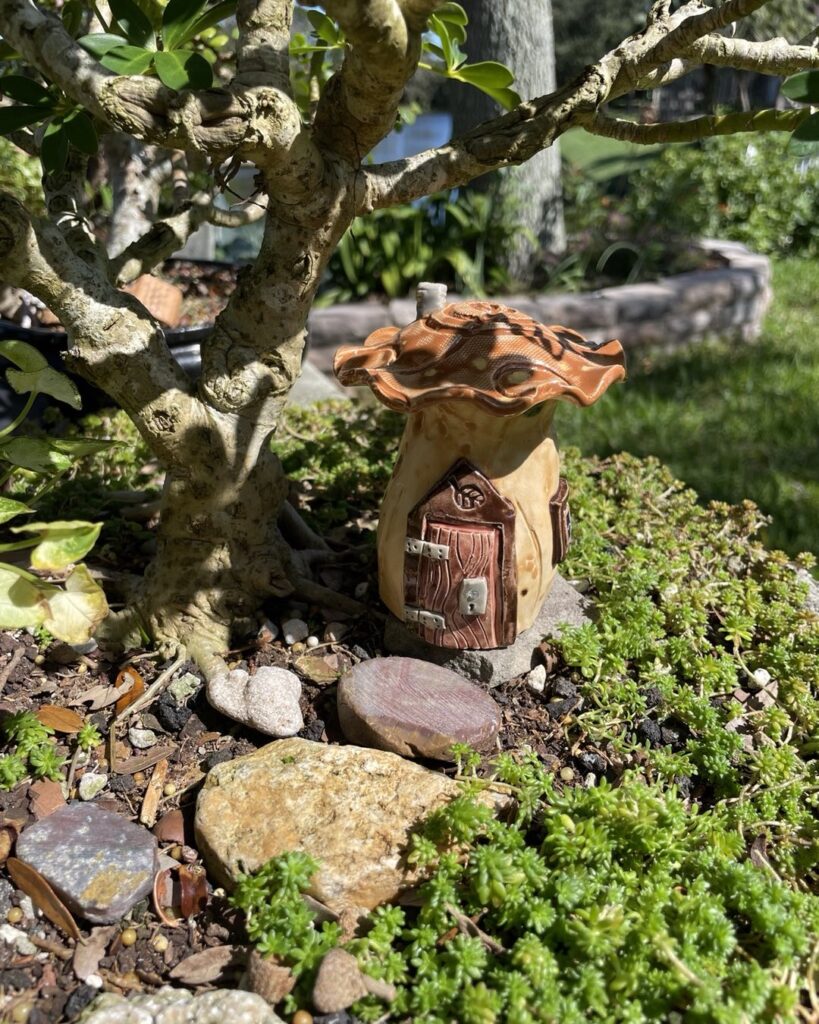
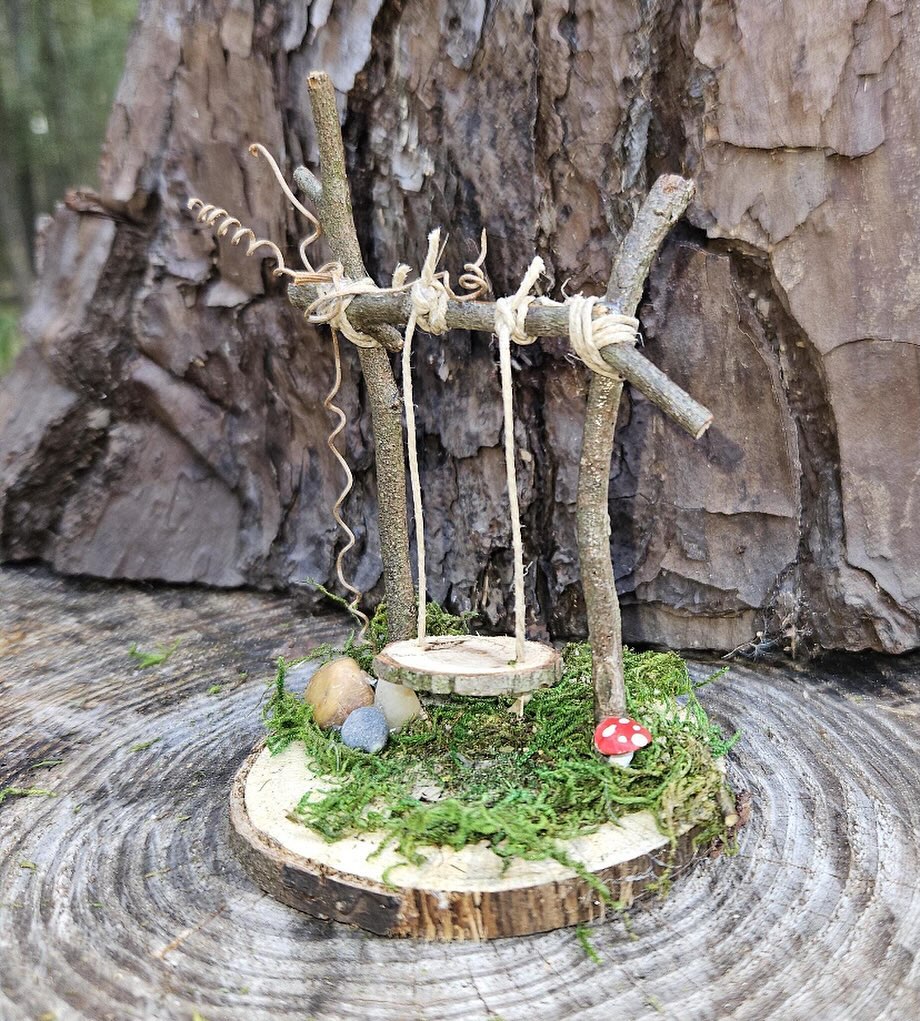
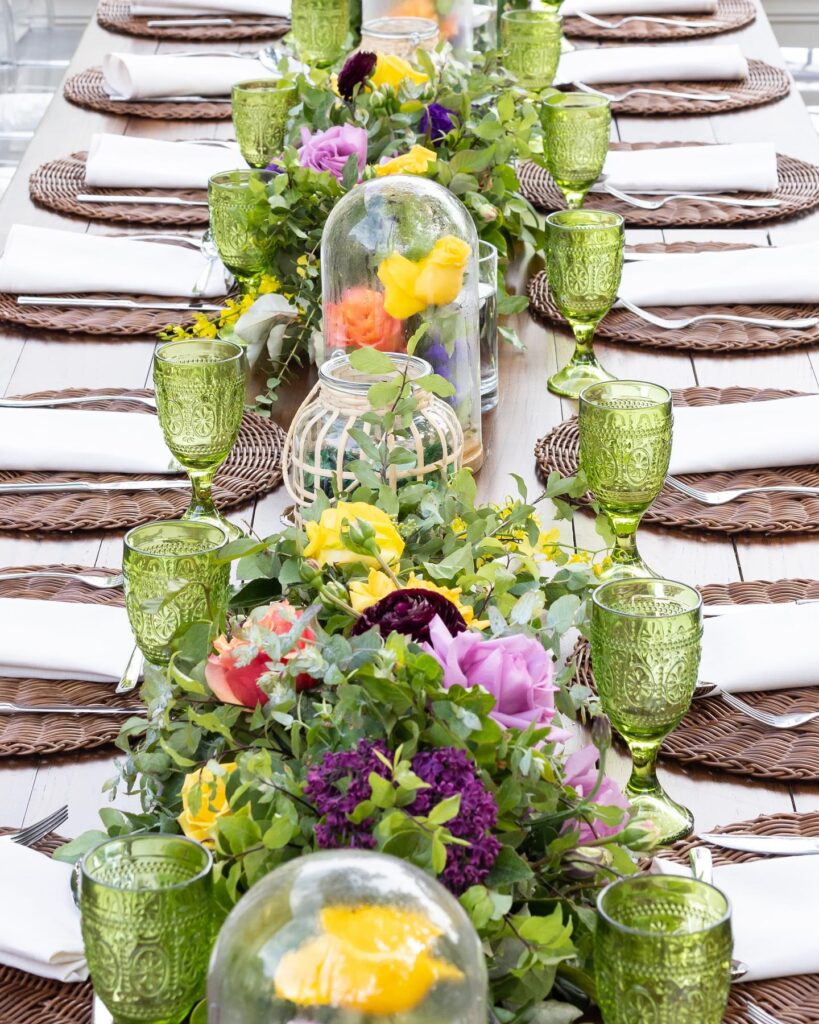
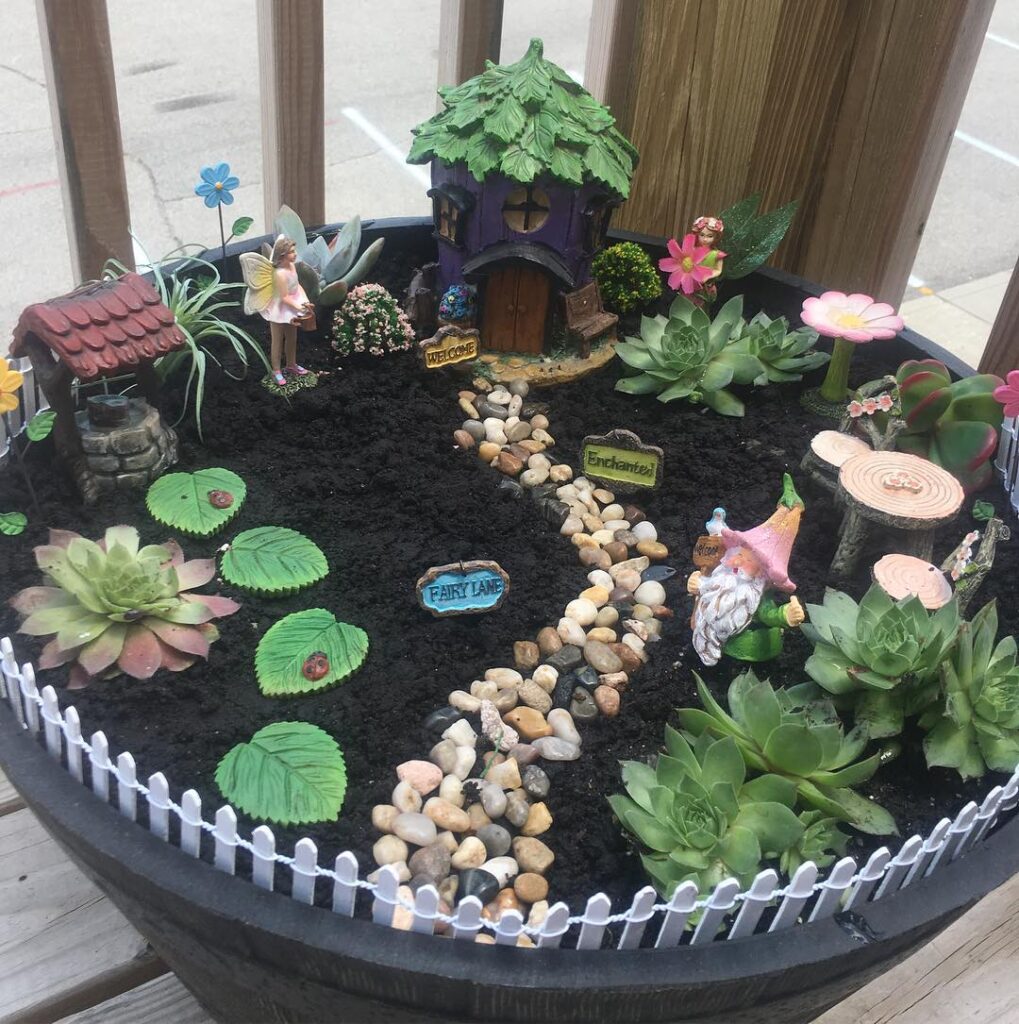
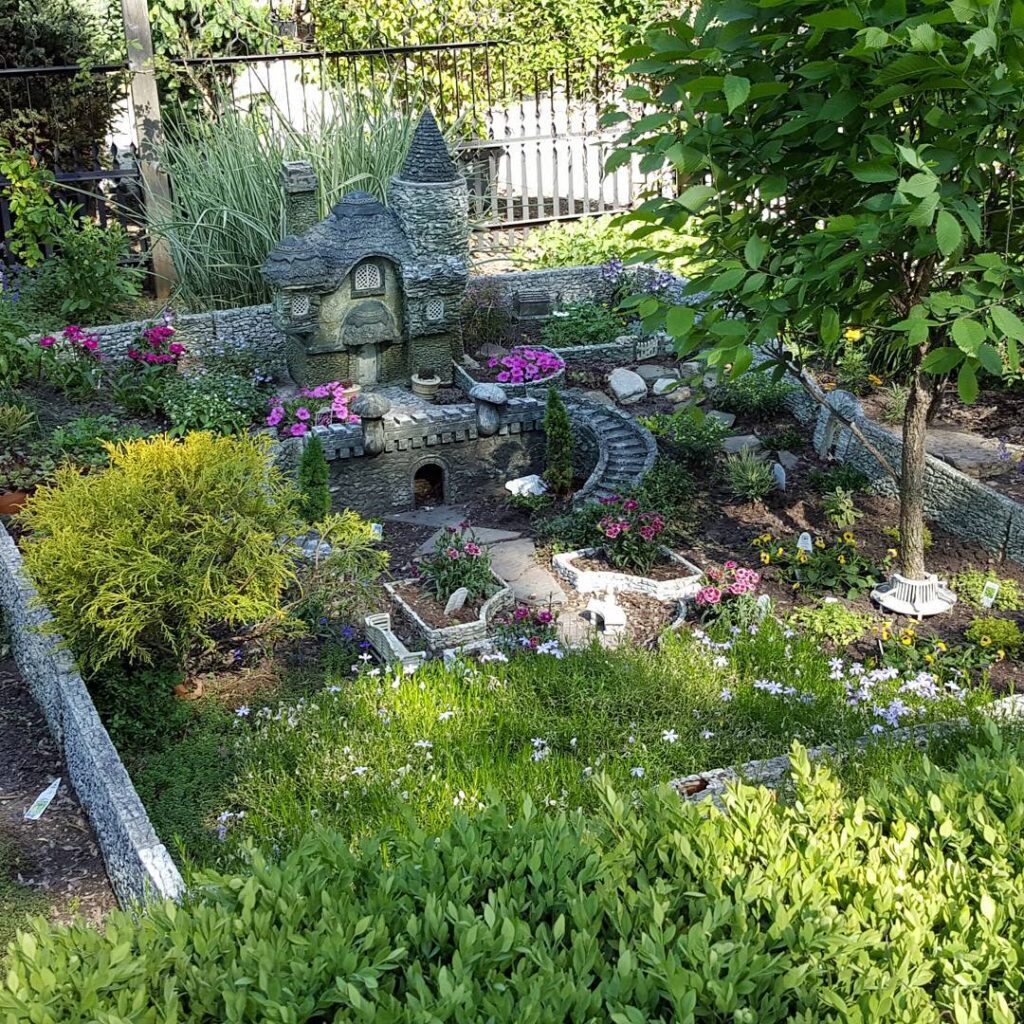
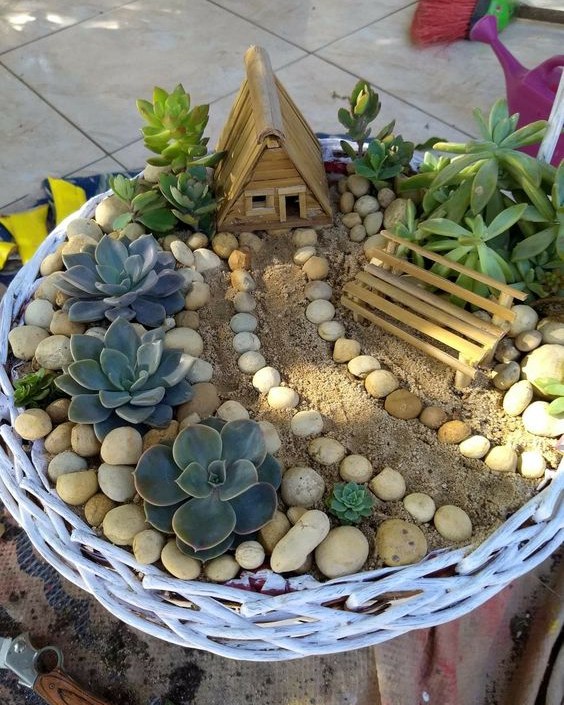
Fairy gardens are an open invitation to play, wonder, and imagine. Let kids add their own elements, like a painted rock or handmade fairy door. Ask guests to leave a note or gift for the fairies. Use glow-in-the-dark pebbles or solar lights to make it enchanting at night.
This isn’t just décor—it’s an experience.
Final Thoughts
A fairy garden doesn’t need to be complicated or expensive. With just a bit of curiosity and some tiny details, you can create an enchanting outdoor space that invites pause, imagination, and storytelling.

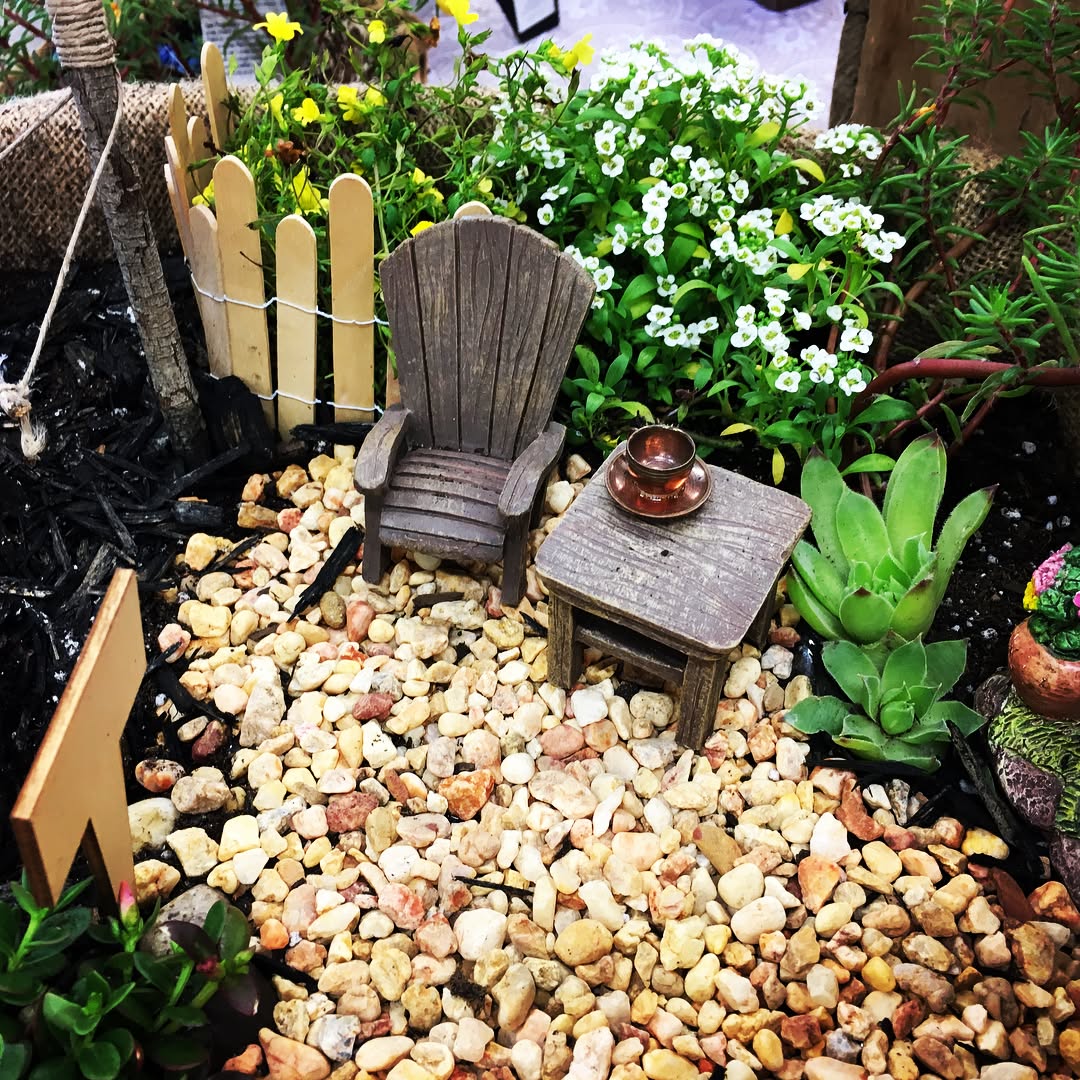






Leave a Reply